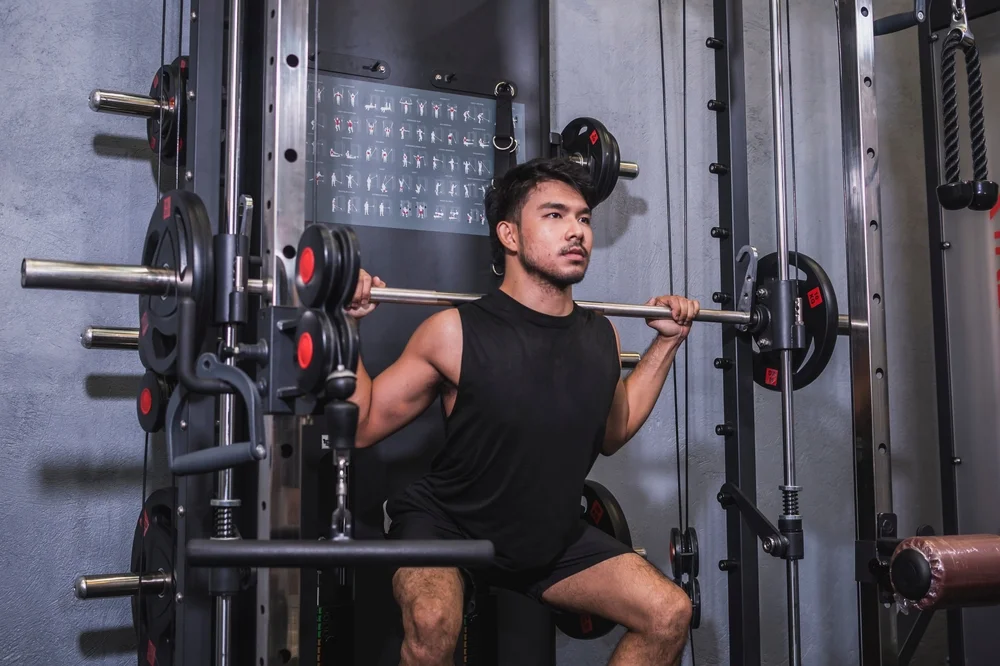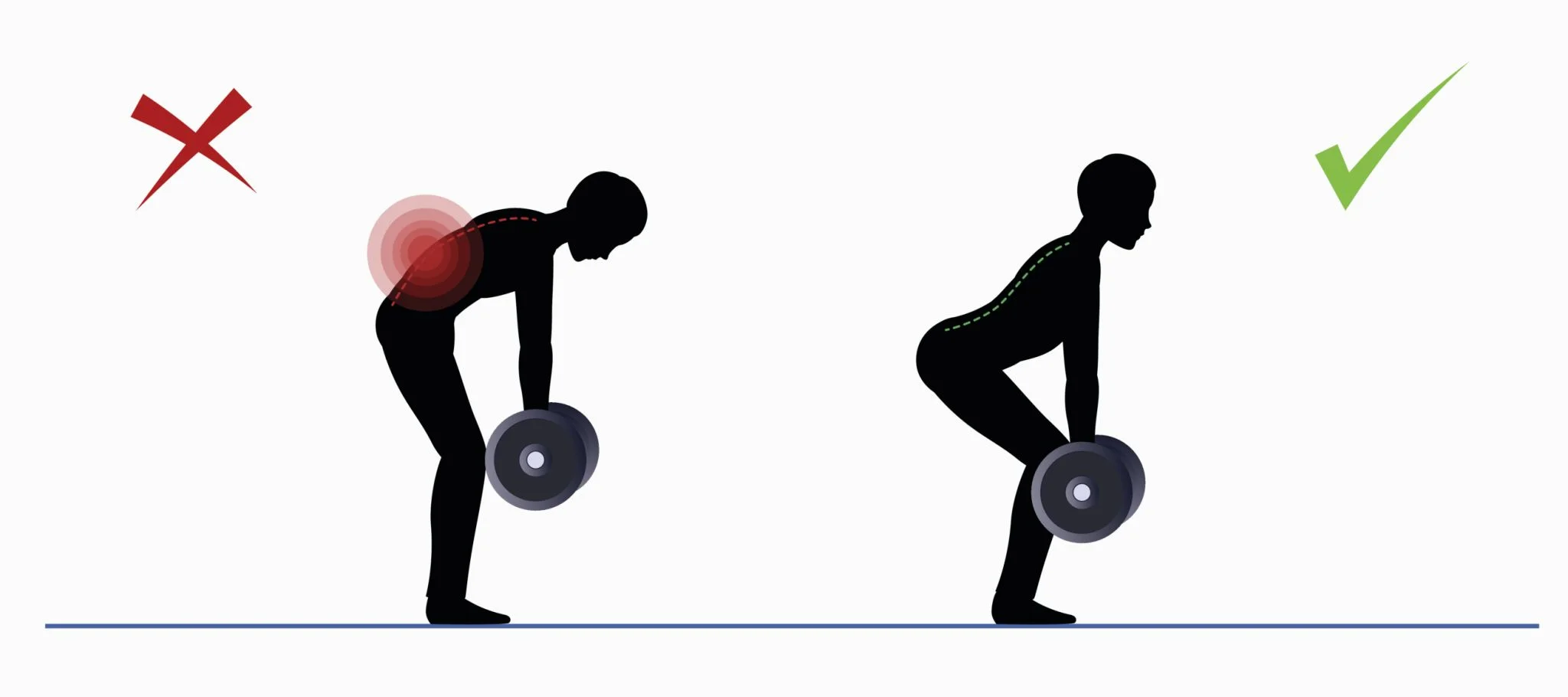Squats are a cornerstone of many fitness routines, renowned for building lower body strength, enhancing core stability, and improving overall fitness. However, executing squats with improper form can lead to knee pain and long-term injuries, undermining these benefits. Understanding and practicing proper squatting form is crucial for protecting your knee health while maximizing the effectiveness of the exercise.
The Importance of Proper Squatting Form
Proper squatting form is essential for harnessing the full benefits of the exercise. Squats engage multiple muscle groups, including the quadriceps, hamstrings, glutes, and core. They also promote joint stability, flexibility, and cardiovascular health. However, incorrect form can place undue stress on the knees, leading to pain, discomfort, and potential injuries such as patellofemoral pain syndrome and ligament strains. Ensuring correct form not only enhances performance but also safeguards against these risks.
Setting Up for Success: The Correct Stance
The foundation of a proper squat begins with the correct stance. Stand with your feet shoulder-width apart and your toes slightly pointed outwards. This stance provides a stable base and allows for the natural movement of your hips and knees. Your weight should be evenly distributed across your feet, ensuring no extra strain is placed on any area. Proper stance sets the stage for the rest of the movement, facilitating balance and stability throughout the squat.
Engaging the Core for Stability
A strong, engaged core is vital for maintaining balance and protecting your lower back during squats. Tighten your abdominal muscles as if bracing for an impact. This engagement helps stabilize your spine and prevents excessive forward leaning or rounding of the lower back, which can increase stress on the knees. Keeping the core engaged throughout the movement ensures that your upper body remains stable and aligned.
Initiating the Squat: The Hip Hinge
The movement of a squat should begin with a hip hinge. Push your hips back as if you are about to sit down in a chair. This action helps to keep your knees from moving too far forward, thereby reducing the stress on the knee joints. By focusing on driving your hips back rather than bending your knees first, you encourage proper form that supports both your knees and your lower back. Maintaining a lifted chest and straight back throughout this movement is crucial for alignment and balance.
The Descent: Lowering Your Body with Control
As you lower your body, bend your knees and hips simultaneously. Depending on your flexibility and comfort, aim to descend until your thighs are parallel to the ground or slightly below. Keeping your knees in line with your toes is important, avoiding any inward collapse. This alignment ensures that the stress on your knees is minimized. A neutral spine should be maintained, with the lower back straight and the chest lifted to prevent rounding. Controlled descent is key to preventing injuries and ensuring the correct muscle groups are engaged.
The Ascent: Rising with Power
To rise from the squat, press through your heels and engage your glutes and hamstrings. This movement helps to lift your body back to the starting position while reducing the load on your knees. It’s essential to avoid shifting your weight onto your toes, as this can increase knee strain. Instead, focus on a steady, controlled ascent that utilizes the power of your lower body muscles. Proper weight distribution during the ascent ensures that the knees are protected and the squat is executed efficiently.
Avoiding Common Squatting Mistakes
Several common mistakes can compromise squatting form and lead to knee pain. One frequent issue is knee valgus, where the knees collapse inward. This can be avoided by ensuring your knees track over your toes and strengthening your glutes and hips to support proper alignment. Excessive forward knee movement, another common mistake, can be mitigated by emphasizing the hip hinge and keeping your weight toward your heels. Rounding the lower back during the squat can be prevented by engaging the core and maintaining a lifted chest. Lastly, avoid lifting with your toes by distributing your weight evenly across your feet.
Conclusion
Proper squatting form is essential for protecting knee health and maximizing the benefits of this foundational exercise. You can perform squats safely and effectively by focusing on the correct stance, engaging the core, initiating the movement with a hip hinge, controlling the descent, and rising with power. Avoiding common mistakes such as knee valgus, excessive forward knee movement, and rounding the lower back ensures your knees remain healthy and pain-free. With careful attention to form, squats can be a powerful tool for building strength, enhancing stability, and improving overall fitness.
FAQs
Why is proper squatting form important for knee health?
Proper squatting form is crucial for knee health because it:
- Reduces Stress: Minimizes unnecessary stress on the knee joints.
- Prevents Injuries: Lowers the risk of knee injuries such as strains and ligament damage.
- Enhances Performance: Improves the effectiveness of the exercise, leading to better strength and muscle development.
- Promotes Longevity: Helps maintain knee function and health over the long term.
What is the proper squatting form to protect your knees?
Follow these steps to ensure proper squatting form:
- Start Position:
- Feet Position: Stand with your feet shoulder-width apart and toes slightly turned out.
- Weight Distribution: Distribute your weight evenly across your feet, keeping your heels on the ground.
- Descent:
- Hips First: Begin the squat by pushing your hips back like sitting in a chair.
- Knees Aligned: Ensure your knees track over your toes and do not collapse inward.
- Chest Up: Keep your chest up and back straight to maintain a neutral spine.
- Depth: Lower yourself until your thighs parallel the ground, but do not let your knees go past your toes.
- Ascent:
- Push Through Heels: Drive through your heels to return to the starting position.
- Hip Extension: Fully extend your hips at the top of the movement.
- Maintain Alignment: Keep your knees aligned with your toes throughout the movement.
What are common squatting mistakes that can harm your knees?
Common squatting mistakes include:
- Knees Caving In Allowing your knees to collapse inward (valgus) during the squat.
- Forward Knee Travel: Letting your knees move too far forward past your toes.
- Rounding the Back: Not maintaining a neutral spinecan shift the load to your knees and lower back.
- Heels Off the Ground: Rising onto your toes shifts your weight forward and increases knee stress.
- Shallow Squats: Not squatting deep enough, leading to inadequate engagement of the glutes and hamstrings.
How can I improve my squatting technique for better knee health?
To improve your squatting technique:
- Practice Hip Hinge: Focus on initiating the movement from your hips rather than your knees.
- Strengthen Hip Muscles: Perform exercises that strengthen your hip abductors and glutes to improve knee alignment.
- Improve Ankle Mobility: Stretch and mobilize your ankles to allow deeper, more stable squats.
- Use a Mirror: Perform squats before a mirror to monitor your form and make adjustments.
- Start with Bodyweight: Before adding external weights, perfect your form with bodyweight squats.
What role does footwear play in proper squatting form?
Footwear plays a significant role in proper squatting form by:
- Providing Stability: Good shoes offer a stable base, which helps maintain proper alignment.
- Supporting the Arch: Shoes with proper arch support can prevent overpronation and knee misalignment.
- Ensuring Traction: Soles with good grip prevent slipping, allowing for controlled movement.
Are there specific exercises to strengthen knees for better squatting?
Yes, specific exercises can strengthen the muscles around the knees and improve squatting performance:
- Leg Press: Strengthens the quadriceps, hamstrings, and glutes with controlled knee movement.
- Lunges: Targets the quadriceps and glutes, promoting balance and knee stability.
- Step-Ups: Builds strength in the quadriceps and glutes, enhancing knee support.
- Hamstring Curls: Strengthens the hamstrings, which help stabilize the knees.
- Calf Raises: Improves ankle strength and stability, contributing to better squat form.
What warm-up routines are effective for preparing the knees for squatting?
Effective warm-up routines for squatting include:
- Dynamic Stretches: Leg swings, walking lunges, and high knees to increase blood flow and flexibility.
- Foam Rolling: Roll out the quadriceps, hamstrings, and calves to release muscle tightness.
- Hip and Ankle Mobility Drills: Exercises like hip circles and ankle pumps to improve range of motion.
- Light Squats: Perform a few sets of bodyweight squats to prime the muscles and joints for the workout.
How often should I practice squatting to improve my form and knee health?
To improve form and knee health, practice squatting:
- Frequency: 2-3 times per week.
- Repetitions: Start with three sets of 10-15 bodyweight squats, focusing on perfect form.
- Progression: Gradually increase intensity and volume as your technique and strength improve.
Following these guidelines and practicing proper squatting form can protect your knees, enhance your performance, and ensure long-term joint health.



